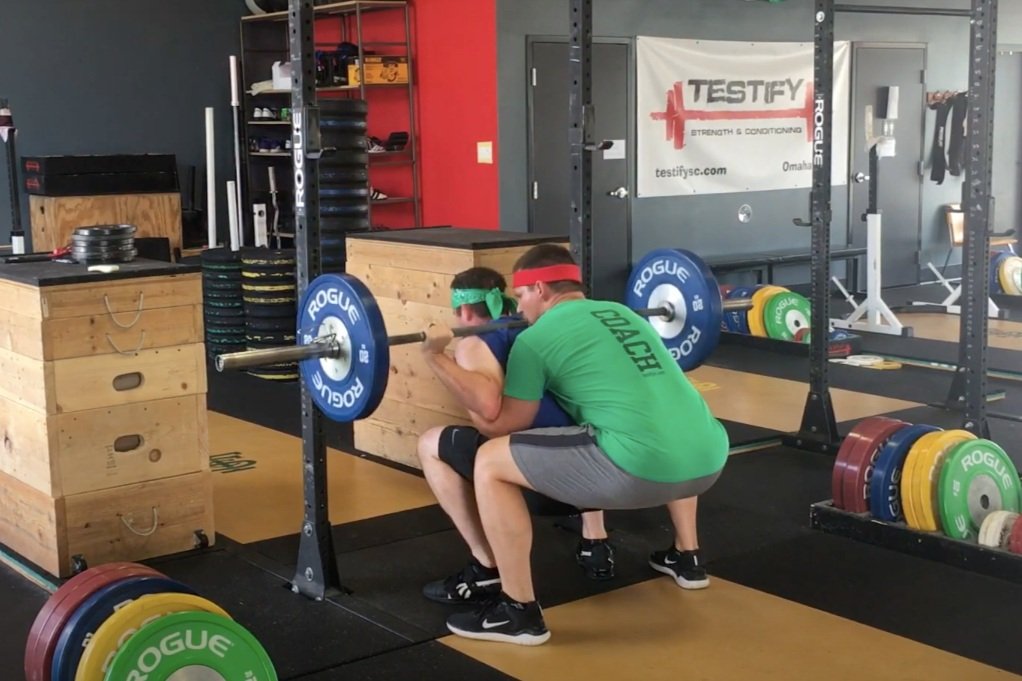The BEST Squat Accessory Ever?!
/What is the best squat accessory ever? Answer: The TUBOW. What is a TUBOW, you ask? Let’s quickly dive into that, as well as why and how you use one.
I also recommend watching the included video for a demonstration of how to use the TUBOW.
What is a TUBOW?
The TUBOW is a Terribly Useful Block Of Wood. It’s a 2-foot long block of 4” x 4” wood, and while you are welcome to use a section of 2” x 4” instead, I’d recommend sticking with 4” x 4” for stability. If you go to Lowe’s, Home Depot, or a similar big box home improvement store, you can often have them cut it to length for you, or you can cut it yourself. If you’d rather order one and not have to deal with any measuring or cutting, just click here, and you’ll be good to go.
Why Use a TUBOW?
Two common squat errors are 1) allowing the knees to continue traveling forward throughout the entire descent - thus ending up too far forward at the bottom of the squat - and 2) the lifter doesn’t allow the knees to move forward enough in the first half of the descent with the result being that the knees will eventually shoot forward at the bottom of the squat - resulting in problems with back angle and often balance as well.
The TUBOW solves these problems by giving the knees a target at which to aim. Using the TUBOW allows the lifter to set the knees’ correct position about one-third to one-half of the way into the descent. This makes sure that the knees go far enough forward at the right time while simultaneously ensuring that they don’t go too far forward.
How Do You Use a TUBOW? (hint: it’s not complicated)
First, position the TUBOW right at your toes - perhaps a half-inch or an inch in front of your toes depending on anthropometry (you’ll figure this out with practice). You can use one TUBOW or two.
Next (after unracking the bar and taking your squat stance), as you start your descent, cue your knee to touch the TUBOW lightly about one-third to one-half of the way into your descent. Again, touch it lightly - don’t knock it over.
After this, you simply keep your knee glued lightly to the TUBOW the rest of the way into your descent. Since the TUBOW won’t allow you to shove your knee any further forward, this will force you to reach back with your hips, and this, in turn, will force you to correctly lean over as you reach the bottom of the squat. The result is that, by fixing the knees’ position, we automatically fix the hips’ position and back angle as well. For this reason, we often refer to the TUBOW as the portable squat coach (especially useful for those who train without a coach).
Once you reach the bottom of the squat, drive your hips up out of the hole as normal.
A Second Benefit of the TUBOW
The TUBOW can also help fix the knees’ lateral position. You want your knees to travel in line with your toes, i.e., they shouldn’t be traveling inside of your toes (“valgus knees”), nor should they be traveling outside of your toes (“varus knees”). With the TUBOW in place, you now have a target for your knees, and this can help you fix any issues you might have with the lateral positioning of your knees.
Last Thing . . .
When needed, use the TUBOW during your warm-ups - don’t use it for your work sets (at heavy weights, the TUBOW will be a distraction). Also, don’t use the TUBOW forever - it’s a tool, not a crutch. Use it a few times to get the sense of where your knees should be, or use it if your suspect that your form has degraded over the past few sessions, but after that, use your brain to position your knees correctly. The TUBOW taught you how to control your knees - now it’s your turn to execute.
As always, we hope this helps you get stronger and live better.
(Some links may be affiliate links. As an Amazon Associate, Testify earns from qualifying purchases.)













